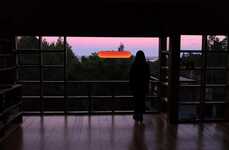
The EPFL Made a Light 20,000 Times the Luminosity of the Sun
References: osapublishing.org & gizmodo
The Swiss Federal Institute of Technology in Lausanne, or the EPFL, has developed a system that generates the luminous flux of over 20,000 suns. Luminous flux is the amount of energy contained in radiating light -- meaning that, while the device is not nearly as hot or powerful as the Sun, its light is far brighter than the Sun's.
The EPFL developed its system in order to test materials under extreme conditions. It consists of 18 spherical light sources placed in concentric circles around a larger half-sphere. This greater sphere measures at two meters in diameter.
The smaller light sources each contain a Xenon bulb and a reflector. Due to the shape of the smaller lights and larger sphere, the light emitted from the EPFL's system gets focused onto a small surface area when activated, creating an extremely powerful luminosity.
The EPFL developed its system in order to test materials under extreme conditions. It consists of 18 spherical light sources placed in concentric circles around a larger half-sphere. This greater sphere measures at two meters in diameter.
The smaller light sources each contain a Xenon bulb and a reflector. Due to the shape of the smaller lights and larger sphere, the light emitted from the EPFL's system gets focused onto a small surface area when activated, creating an extremely powerful luminosity.
Trend Themes
1. Extreme Luminosity - The development of a system that generates luminous flux 20,000 times the intensity of the Sun, creating opportunities for powerful lighting solutions.
2. Concentrated Light - The use of a system with multiple spherical light sources to focus light onto small surface areas, offering potential applications in precision lighting and targeted illumination.
3. Testing Under Extreme Conditions - The development of a high-intensity light system for testing materials under extreme conditions, presenting opportunities for innovative research and experimentation.
Industry Implications
1. Lighting - The lighting industry can explore the potential of extreme luminosity for applications such as stadium lighting, outdoor events, and industrial lighting solutions.
2. Materials Testing - The materials testing industry can leverage the concentrated light system to simulate extreme conditions and test the durability and performance of various materials.
3. Energy Efficiency - The energy efficiency industry can utilize the technological advancements in high-intensity lighting to develop more efficient and cost-effective lighting solutions.
2.8
Score
Popularity
Activity
Freshness























